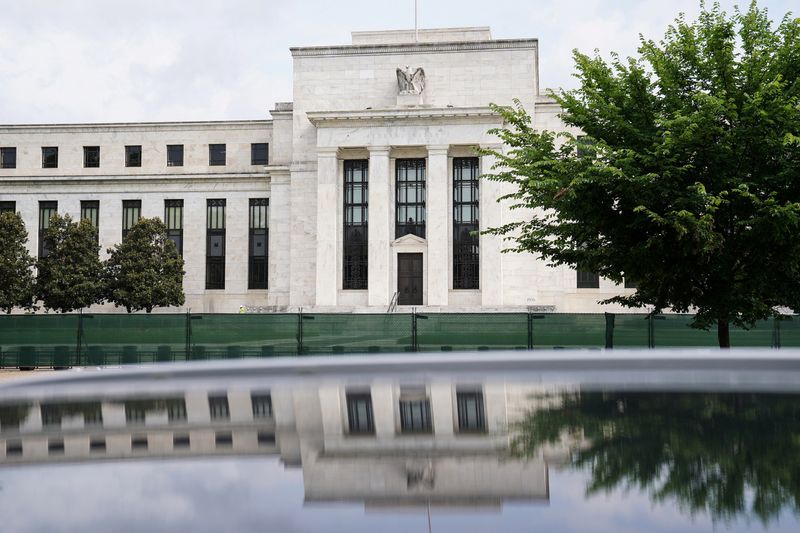By Yasin Ebrahim
Investing.com -- The Federal Reserve surprised markets on Wednesday with a larger than expected 0.75% rate increase as persistently high inflation compelled the central bank to deliver its biggest hike at a single meeting since 1994.
The Federal Open Market Committee raised its benchmark rate to a range of 1.5% to 1.75% from 0.75% to 1% previously. That was more hawkish than economists’ expectations for a 0.5% rate hike.
In the weeks leading up to the decision, Fed Chairman Jerome Powell said he wasn't “actively considering” a 0.75% rate increase and signaled that a 0.5% hike would be appropriate at the June and July meetings.
But several signs showing above-trend inflation could stick around for longer than feared forced the central bank to step up the pace of monetary policy tightening to prevent falling further behind in the battle against inflation.
The Fed now sees its benchmark rate rising to 3.4% in 2022, markedly above the 1.9% forecast in March. With four meetings remaining on the Fed's calendar, a further 0.75% rate hike is likely.
"From the perspective of today, either a 50 basis point or a 75 basis point increase seems most likely at our next meeting," Powell said in the press conference that followed the policy decision on Wednesday.
The Fed chairman, however, also signaled that the central bank was keen to "front-load," or deliver large hikes now, potentially paving the way for a slowdown later.
"[W]e came to the view that we’d like to do a little more front-end loading, [...] today's 75-basis-point increase is an unusually large one, and I do not expect moves of this size to be common," Powell added.
The steeper than expected rate hike pushes the Fed closer to reaching the neutral rate – a rate that neither improves the economy nor slows it down. The Fed had previously signaled that it was eager to move “expeditiously” to a restrictive stance, above the neutral rate, to bring down demand and cool inflation.
Inflation, meanwhile, isn't expected to reach the Fed's 2% target anytime soon. The core personal consumption expenditures price index, the Fed’s preferred inflation, is forecast to climb to 4.3% in 2022, up from a prior forecast of 4.1%. For 2023, inflation is estimated to drop to 2.7%, compared with the prior forecast of 2.6%, while in 2024 inflation expectations are unchanged at 2.3%.
Restoring supply and demand in the labor market is key to the central bank’s plans. A tight labor market in which there are about two jobs for every unemployed American – threatens to fuel a wage spiral that could push inflation beyond the Fed’s reach.
Some on Wall Street have suggested that job gains would have to reverse before the Fed considers taking a step back. "No fun 'til [the] Fed [is] done... and in 2022 that requires [a] negative payroll print," Bank of America said last week.
The Fed is betting that its policy will help bring some balance to the labor market, with members now seeing the unemployment rate at 3.7% at year-end, up slightly from a prior forecast of 3.5%.
The era of aggressive Fed tightening has many worried that the central bank could overshoot on policy tightening, slowing the economy by too much into recession.
Despite cutting their growth outlook, Fed members continue to bet that a recession will be avoided, forecasting the economy to grow 1.7% in 2022, down sharply from a prior forecast of 2.8%.
Still, fears of a recession have been most prevalent in the bond market, where the yield curve continues to flatten – a sign that bond traders appear to be losing confidence in the Fed’s ability to avoid a hard landing.
The Fed’s plan to shrink its nearly $9 trillion balance sheet got underway on Wednesday, as the first tranche of debt, or Treasury securities, matured.
The quantitative tightening plan will initially allow $30 billion in Treasury securities and $17.5 billion in agency MBS to roll off its balance sheet, with the intent of gradually stepping up the pace after three months to $60 billion and $35 billion per month, respectively.
